How Courts Might Review Uses of the “Good Cause” Exception to Deregulate, by Elias Neibart
Eli Nachmany just wrote a characteristically insightful piece on the current administration’s ability to use the APA’s “good cause” exception to “accelerate repeals of unlawful agency rules.”
His argument is straightforward: “The Administrative Procedure Act usually requires agencies to give public notice and allow interested parties to file comments whenever the agency wants to issue a new rule (including a repeal of a rule). But this requirement is inapplicable when the agency, ‘for good cause,’ determines that notice and comment is ‘impracticable, unnecessary, or contrary to the public interest.’” So, he concludes, given that it’s “contrary to the public interest” to enforce unlawful rules, those rules can be repealed immediately via the “good cause” exception—such repeals need not go through notice-and-comment.
If Nachmany is right that the “good cause” exception can be used to repeal rules that the executive branch deems to be unlawful, that would, of course, be a big deal. On its own, an administration could conclude that certain regulations are unlawful and get rid of them with a stroke of a pen.
This blog post doesn’t take a stance on Nachmany’s position. For the sake of argument, let’s say he’s right. If that’s the case, how would courts review an administration’s efforts to use the “good cause” exception? The answer to that question should allay fears that using the “good cause” exception to deregulate will severely undermine the APA or the rule of law. Why? Well, the executive branch’s determinations that certain rules are unlawful—the predicate determination to trigger the “good cause” exception—will be reviewed de novo by courts.
Let’s break that down. Normally, when the executive branch invokes the good cause exception, a reviewing court examines the agency’s rationale for why it invoked the exception. And it determines whether that rationale satisfies the statutory standard. So, for example, an agency might say that an emergency or “security threats” require it to forgo protracted notice-and-comment rulemaking. These inquiries are “exceedingly factbound.” Courts take a look at the facts on the ground and ask whether using notice-and-comment procedures would actually have been “impracticable, unnecessary, or contrary to the public interest.” Courts apply the statutory standard to the factual circumstances of the particular case.
Review would obviously take a different form if the executive branch were using the exception because it thinks current regulations are unlawful. There’d be no facts for the court to look at and apply to a statutory standard. Instead, a reviewing court would just have the executive branch’s interpretation of law—that is, the executive branch would have made a determination that a particular regulation is unlawful and then relied on that interpretation to trigger the “good cause” exception.
When that happens, there’s in essence a nested statutory interpretation issue: To determine if the statutory “good cause” exception applies, a reviewing court would first have to determine whether the underlying regulation was, in fact, lawful or unlawful. Under Nachmany’s view, the administration is only able to trigger the exception after making the antecedent determination about the regulation’s legality. So, the court would have to probe the validity of that determination.
In other words, to answer whether or not the administration properly invoked the “good cause” exception, a reviewing court just has to ask one question: Was the executive branch’s view that the regulation was unlawful correct?
That, of course, is a legal question. After Loper Bright Enterprises v. Raimondo, a reviewing court would review that question de novo. It would answer—for itself—whether the executive branch’s interpretation of the regulation’s legality was proper or not. If the administration was correct that the regulation was unlawful, the “good cause” exception would apply. If the administration was wrong, that exception wouldn’t apply.
That’s all to say that when an administration relies on a regulation’s unlawfulness—and that alone—to use the “good cause” exception, the reviewing court’s inquiry is not a factbound one. It doesn’t look at the facts on the ground to see if the notice-and-comment rulemaking was, in fact, unnecessary because of an emergency or something else. Instead, the court just performs standard legal interpretation. It asks whether the regulation that’s being repealed is actually unlawful.
So, taking a step back, we can see that if the current administration is allowed to use the “good cause” exception to deregulate, its use of that provision will be policed by the courts. To trigger the “good cause” exception the administration would have to make the antecedent determination that a particular rule is unlawful. That’s a legal question. If the administration’s determination is challenged, courts will review that question de novo. Thus, if Nachmany is right and the administration can use the “good cause” exception to deregulate, courts will have a role in checking that new deregulatory power.
Elias Neibart is a 3L at Harvard Law School.



